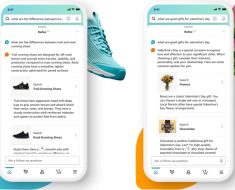Introduction
Welcome to the world of data science, where algorithms, statistics, and domain expertise converge to extract meaningful insights from vast datasets. In this era of technological advancement, having the right tools at your disposal can make all the difference in navigating the intricate landscape of data analysis. Enter “CHATGPT for Data Science Cheat sheet,” – a comprehensive guide designed to equip you with the essentials needed to harness the power of ChatGPT in data science.
Our curated guide goes beyond the conventional, offering a unique blend of ChatGPT insights tailored to the data science community. Whether you’re a seasoned professional or embarking on your data science journey, this cheat sheet is designed to streamline your workflow, enhance your analyses, and elevate your proficiency in handling data challenges.
Understanding CHATGPT
CHATGPT is built upon the foundation of GPT (Generative Pre-trained Transformer), a state-of-the-art language model. GPT excels in natural language processing, enabling it to understand and generate human-like text. CHATGPT takes this further by incorporating interactive conversational abilities, making it an ideal tool for data scientists.
Want to become a full-stack data scientist? It is time for you to power ahead in your AI & ML career with our BlackBelt Plus Program!
Features and Capabilities of CHATGPT
- Natural Language Processing: CHATGPT leverages advanced natural language processing techniques to understand and generate text, making it adept at handling complex data science queries.
- Contextual Understanding: With its transformer architecture, CHATGPT can capture the context of a conversation, allowing it to provide relevant and accurate responses.
- Language Generation: CHATGPT can generate coherent and contextually appropriate text, making it useful for tasks such as data exploration, analysis, and report generation.
- Interactive Conversational Abilities: CHATGPT can engage in interactive conversations, enabling data scientists to have dynamic and iterative interactions for problem-solving and exploration.
Applications of CHATGPT in Data Science

Data Exploration and Analysis
- Exploratory Data Analysis: CHATGPT can assist in exploring and understanding datasets, providing insights and suggestions for further analysis.
- Data Visualization: By generating textual descriptions of visualizations, CHATGPT can enhance data storytelling and facilitate a better understanding of data.
- Statistical Analysis: CHATGPT can answer statistical queries, perform calculations, and explain statistical concepts, aiding in data analysis.
Machine Learning
- Model Selection and Evaluation: CHATGPT can guide in selecting appropriate machine learning models and evaluating their performance.
- Hyperparameter Tuning: CHATGPT can suggest hyperparameter values and strategies for optimizing model performance.
- Feature Engineering: CHATGPT can offer insights and recommendations for feature selection and engineering, enhancing the predictive power of models.
Natural Language Processing
- Text Classification: CHATGPT can assist in text classification tasks, guiding model selection, preprocessing techniques, and evaluation metrics.
- Sentiment Analysis: CHATGPT can analyze sentiment in text data, helping to identify positive, negative, or neutral sentiments.
- Named Entity Recognition: CHATGPT can aid in identifying and extracting named entities from text, facilitating tasks such as entity recognition and information extraction.
Recommendation Systems
- Collaborative Filtering: CHATGPT can provide recommendations based on collaborative filtering techniques, suggesting items based on user preferences and similarities.
- Content-based Filtering: CHATGPT can recommend items based on their content and characteristics, considering user preferences and item attributes.
- Hybrid Approaches: CHATGPT can combine collaborative and content-based filtering techniques to provide mixed recommendations, leveraging the strengths of both approaches.
How to Use CHATGPT for Data Science?

Setting up CHATGPT
- Installation and Dependencies: Follow the instructions to set up CHATGPT on your local machine or cloud environment.
- Accessing the Model: You can access the CHATGPT model through APIs or libraries provided by OpenAI, allowing you to interact programmatically.
Preparing Data for CHATGPT
- Data Cleaning and Preprocessing: Ensure your data is clean and preprocessed before feeding it to CHATGPT. Remove noise, handle missing values, and apply appropriate preprocessing techniques.
- Formatting Data for Input: Format your data in a way CHATGPT can understand. This may involve tokenization, encoding, and structuring the data appropriately.
Training CHATGPT
- Fine-tuning on Specific Data: If required, you can fine-tune CHATGPT to improve its performance and make it more domain-specific.
- Training Strategies and Best Practices: Follow best practices for training language models, such as using diverse and representative data, selecting appropriate hyperparameters, and monitoring convergence.
Interacting with CHATGPT
- Input and Output Formats: Provide input to CHATGPT through text prompts or questions. CHATGPT will generate text as output, which you can further process or utilize for analysis.
- Handling User Queries and Responses: Engage conversationally, asking follow-up questions or clarifications to get the desired information.
- Customizing Responses: You can customize CHATGPT’s responses by providing explicit instructions or constraints.
Also Read: 7 Easy Ways to Access ChatGPT-4 for Free
Limitations and Challenges of CHATGPT in Data Science
- Bias and Ethical Concerns: CHATGPT may exhibit biases in the training data, requiring careful handling to avoid perpetuating biases or generating unethical content.
- Lack of Domain-Specific Knowledge: CHATGPT’s general-purpose nature may limit its understanding of domain-specific concepts, necessitating human oversight and verification.
- Over-reliance on Training Data: Responses are based on patterns learned from training data, making them susceptible to inaccuracies or incorrect information present in the data.
- Handling Ambiguous Queries: CHATGPT may struggle with ambiguous queries or requests, requiring clear and specific instructions to generate accurate responses.
Best Practices for Using CHATGPT in Data Science
- Understanding the Limitations: Familiarize yourself with the limitations and potential pitfalls of CHATGPT to make informed decisions and interpretations.
- Verifying and Validating Responses: Cross-verify CHATGPT’s responses with other sources or domain experts to ensure accuracy and reliability.
- Incorporating Human Oversight: Introduce human oversight and review mechanisms to mitigate potential biases, errors, or ethical concerns in CHATGPT’s outputs.
- Continuous Improvement and Feedback Loop: Continuously refine CHATGPT’s performance by incorporating user feedback, monitoring its responses, and updating the training data.
Conclusion
CHATGPT for data science cheat sheet offers a powerful and versatile tool, enabling them to leverage natural language processing and interactive conversational abilities for various data science tasks. By understanding its features, applications, usage, limitations, and best practices, data scientists can harness the full potential of CHATGPT while ensuring responsible and ethical use. As CHATGPT continues to evolve, it holds immense promise for advancing the field of data science and driving innovative solutions.
Want to become a full-stack data scientist? It is time for you to power ahead in your AI & ML career with our BlackBelt Plus Program!





